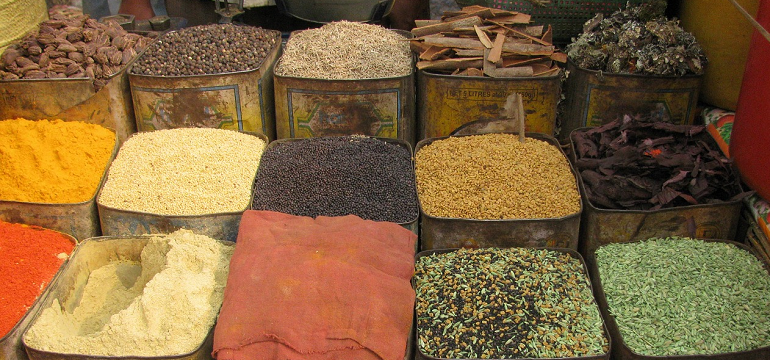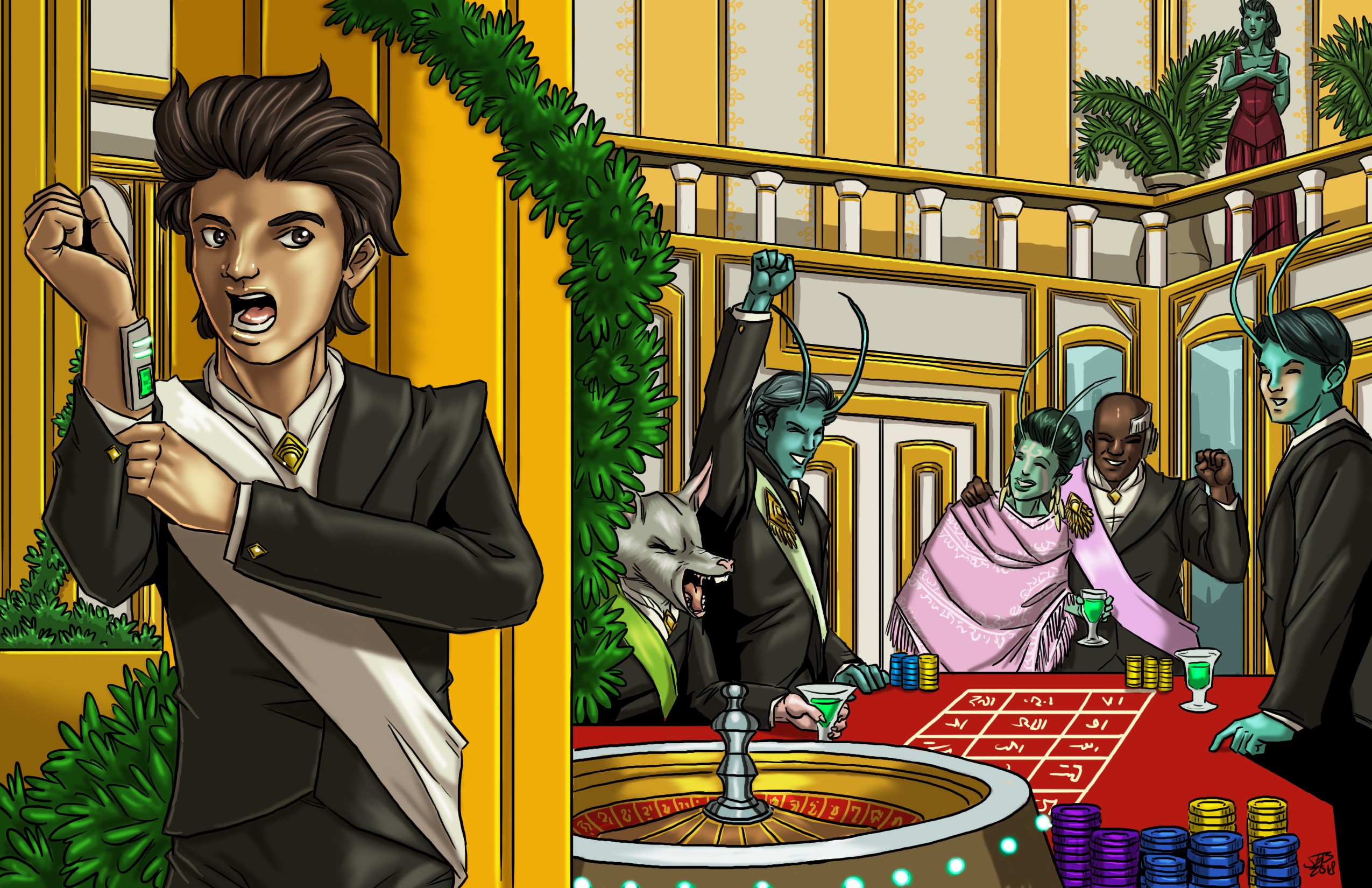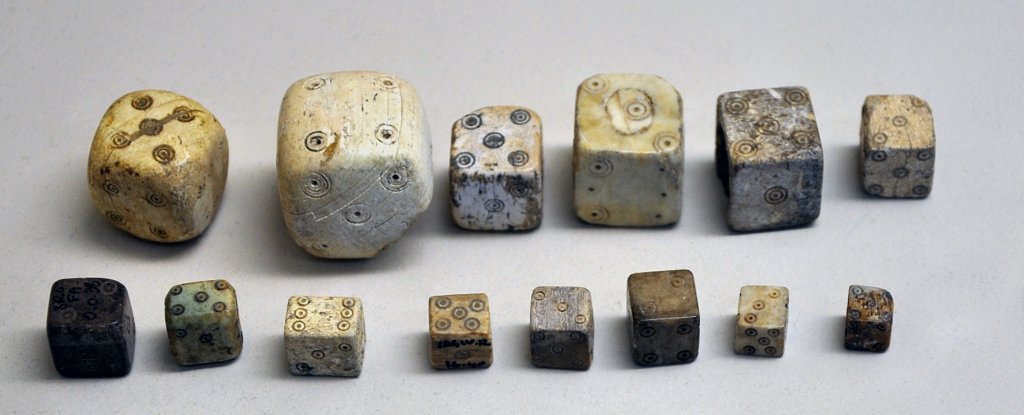When designing an adventure, it’s important to balance out the types of encounters your PCs will face. If they’re going up against a standard dire rat for the third time, they’re going to feel like they’re just grinding through monsters. We want our players to experience an exciting story through the eyes of their PCs. Keeping each encounter feeling fresh and new will do just that.
Variety of Adversaries
When looking at the adventure we outlined last time, we have 4 potential combat encounters: a band of kobolds, a bronze dragon, sahuagin, and sahuagin again. While it might be difficult for the PCs to talk their way out of fighting the kobolds, it should be easy for them to avoid fighting the dragon. This gives us only two guaranteed combats, both with sahuagin. If they end up fighting the kobolds as well, then that’s three combats, all with humanoid or monstrous humanoid opponents. How can we change it up a bit?
The first thing I do is to check the stat-block and the ecology. When we look at the sahuagin, we can see that they have an innate ability to speak with sharks telepathically. This suggests we can include one in the final underwater combat, adding an animal to our roster of opponents. When we look at kobolds, we see that they love to set up ambushes and traps, so we can try and include some in that encounter as a replacement for additional creature types. Perhaps one inventive kobold has even constructed a clockwork opponent, allowing us to add a construct to our list of adversaries.
Now that we have a more than just humanoid and monstrous humanoids, we can further spice up the encounters by varying the kobolds and sahuagin in terms of combat styles. One of the easiest ways to do this is by adding some class levels, but the class templates in the Pathfinder Roleplaying Game Monster Codex are also a great way to add some versatility to the sahuagin without stacking on too many class levels.
Let’s start with the kobolds. They are a weak 1 hit die creature, so we’ll probably want to add a few class levels to make them a threat. Rogue is an obvious choice, so it’s a good selection for a few of the middle-tier opponents. For the inventor who fixed up the clockwork creature, we can add class levels in alchemist or wizard. We’ll also throw in some standard CR 1/4 kobolds as fodder and to make it feel like there is an entire tribe of them.
Next we have the land battle with the sahuagin. I think giving one of them the wizard class template could be interesting, since they’re usually such aggressive melee creatures. As a bonus, we could have him be a necromancer who has just raised several of the dead from the village’s cemetery. Now we have undead as a creature type as well! In fact, lets have an entire combat with uncontrolled skeletons and zombies attacking the village. When the PCs face the sahuagin, we can have the necromancer conjure a custom undead creation made from the bodies of a net full of dead fish.
For the last combat with the sahuagin, we wanted to include some sharks. However, if we also include a ranger or druid template for the marauder’s leader, then one of the sharks can be his animal companion. I like the looks of the ranger creature template; we can give him humans as a favored enemy, boost his dexterity, and give him an underwater crossbow or harpoons to throw.
Variety of Locations
Much of encounter variety comes down to location, location, location. How can you make it feel like the PCs are not just fighting in the same environment and in the same static location over and over? One way is to include lots of interesting terrain elements on the map, which we’ll get into more in-depth next week. Another way is to keep changing the environment, in and out of combat.
In our story, we start in a coastal town, take a trip across open sea to a small island. There, we go through a dense forest and encounter a tribe of kobolds who guard the oceanic cave of a bronze dragon. On the other side of the island, the PCs find a fishing village with a cemetery over-run with undead and then fight sahuagin on the docks. Finally, the dragon bestows on them the ability to breathe water and they can chase the sahuagin away by fighting them near the coral reef.
Now we have a good variety of environments to work with across our adventure: urban, ocean, forest, cavern, urban again, then underwater near a coral reef. By keeping the adventure moving through different locations, every situation becomes fresh. Even if you’re writing a dungeon crawl through dwarven ruins, you can add sections of natural caverns, cave-ins, or lava dykes to change up the different areas and make them feel unique.
Variety of Conditions
Adding just one interesting feature or situation in an encounter can change the feel entirely. Do the opponents start far apart, or do the end up right on top of each other? Is there a chance to negotiate peace first, or do the enemies ambush the PCs? Are there any hazards or other effects in the area that the PCs can use to their advantage? What is the lighting like, or the weather if it’s outside?
Our last encounter with the sahuagin takes us underwater; at first glance this is a location but underwater combat creates a variety of special conditions. During the fight with the undead near the cemetery, we can have townsfolk who are in immediate danger of getting murdered by the undead. Saving them also creates a special condition that helps make the fight interesting.
What sorts of things can you come up with for the kobold encounter or the fight on the village docs with the necromancer? Leave them in the comments, below.






